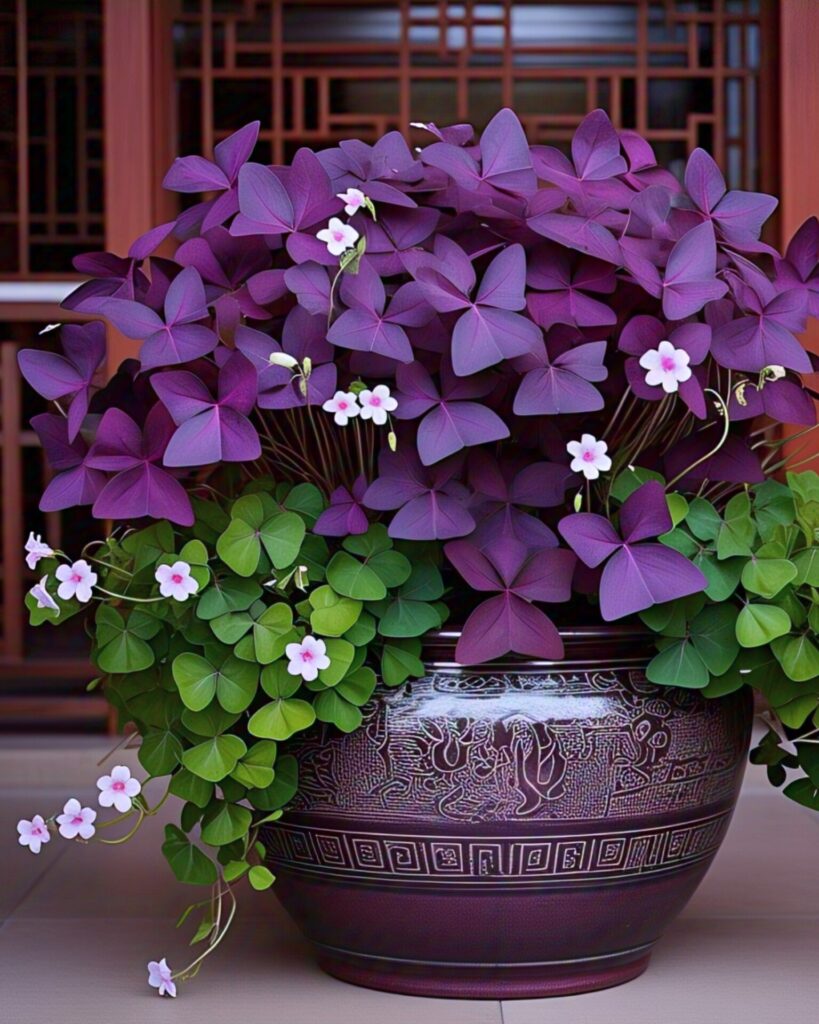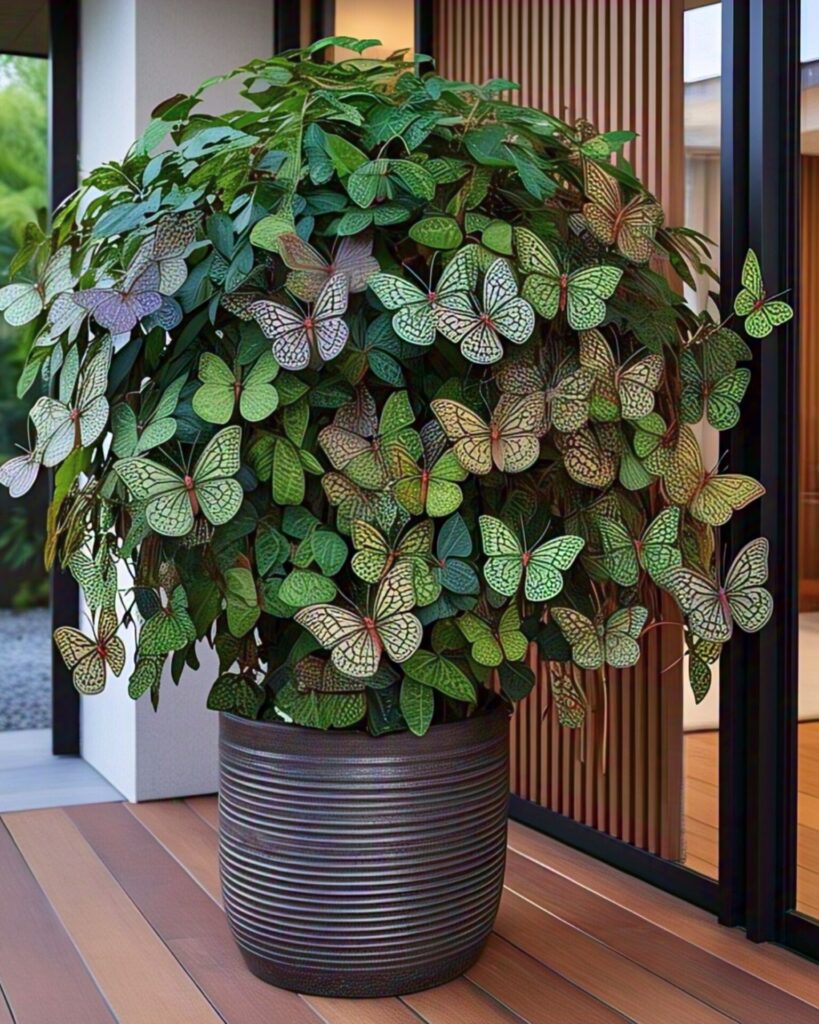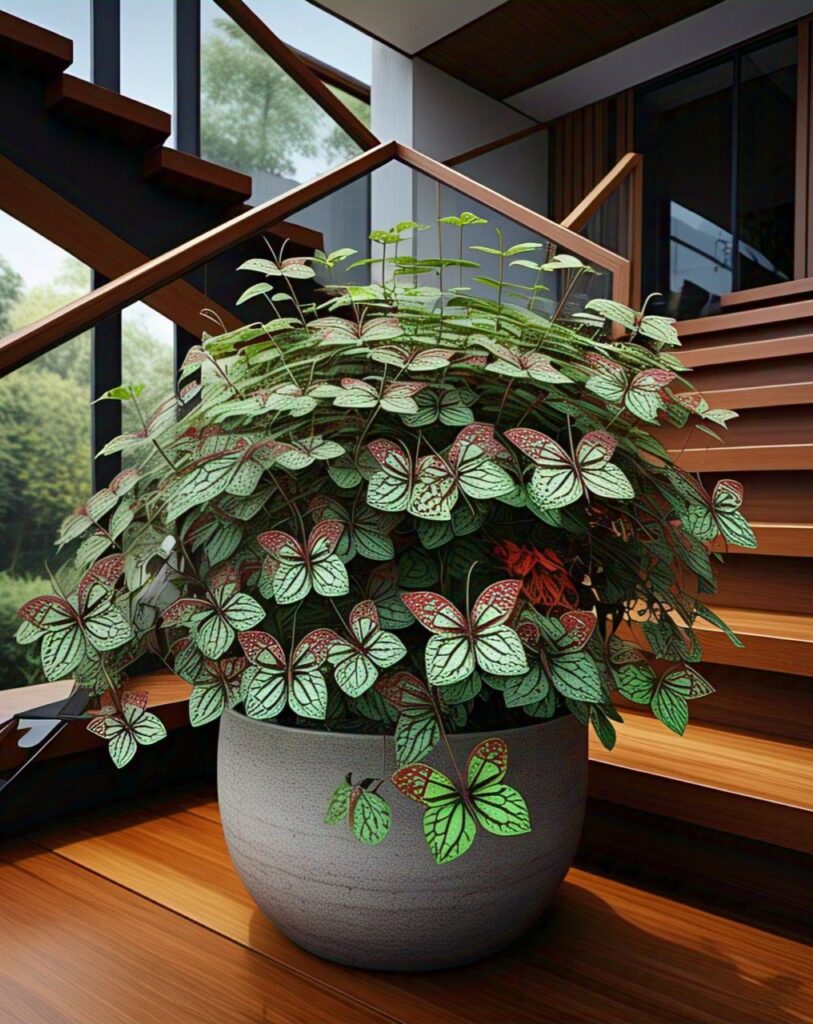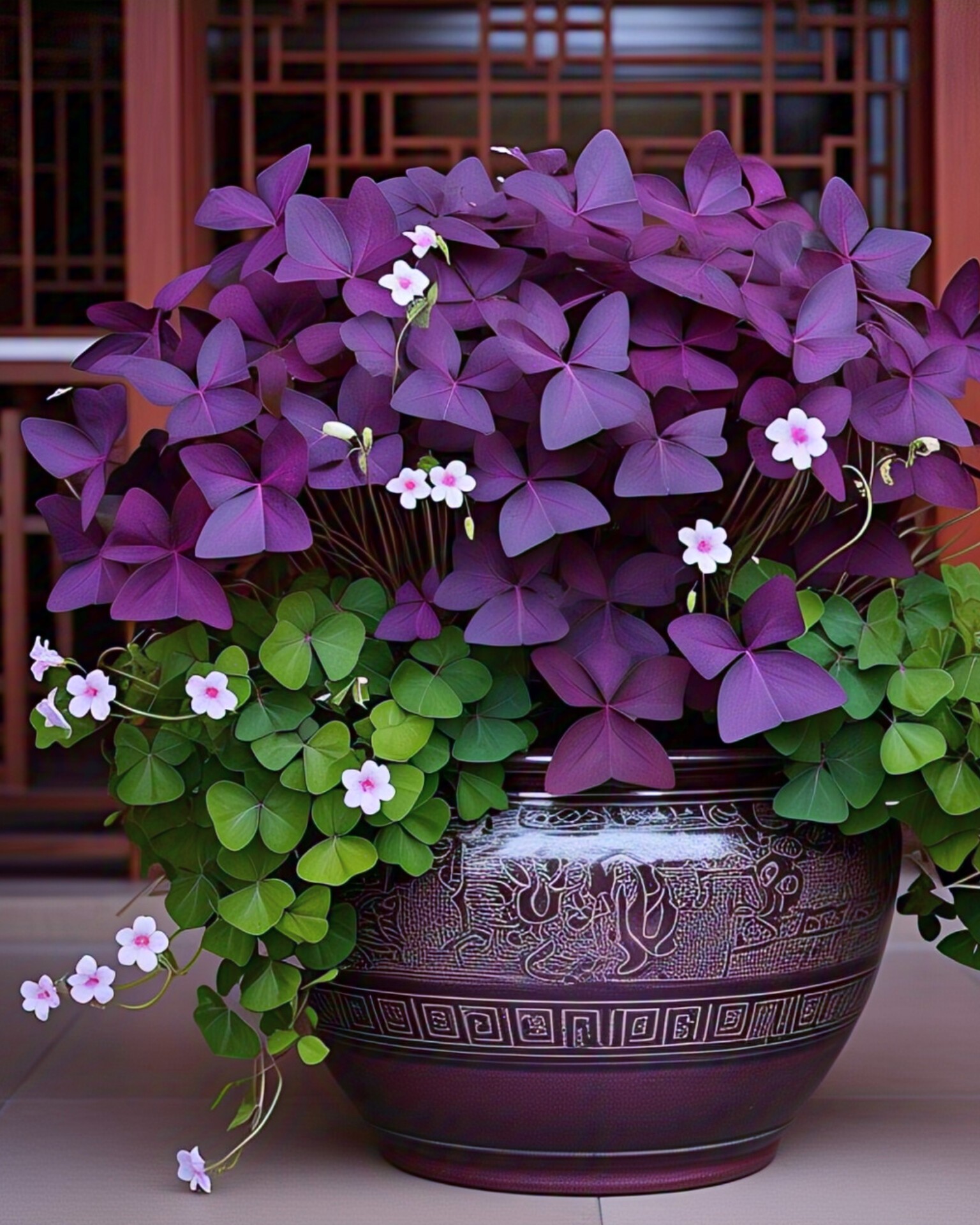As we explore the enchanting world of butterfly plants, a compelling question arises—are these botanical wonders real or fake? The dichotomy between butterfly plants real or fake encapsulates a broader conversation about our relationship with nature and the choices we make in our gardens. This exploration leads us to consider not only the aesthetic appeal of butterfly plants but also their ecological significance and the implications of choosing artificial alternatives.
The Essence of Butterfly Plants
At the heart of our exploration are the butterfly plants themselves. These plants serve as vital components of our ecosystems, embodying both beauty and purpose. They attract butterflies and provide essential resources for their survival. However, we must also recognize the existence of synthetic counterparts that mimic these natural beauties, raising questions about authenticity in our gardens.

Understanding Butterfly Plants
When discussing butterfly plants, we typically refer to specific flora known for attracting butterflies, such as milkweed, lantana, and butterfly bush. Each of these species plays a pivotal role in the lifecycle of butterflies, contributing to their nourishment and reproduction.
Milkweed is often considered the primary host plant for monarch caterpillars, offering a critical food source for their growth and development. Lantana, with its vibrant blooms, serves as an excellent nectar source for adult butterflies, while butterfly bushes draw various species with their fragrant blossoms. Together, they create a thriving environment for butterfly populations, fostering a sense of wonder and connection with the natural world.
Importance in Ecosystems
The importance of butterfly plants extends beyond mere aesthetics; they are integral to supporting local ecosystems. By providing food sources and habitats, they contribute to biodiversity and ecological stability. In urban environments where natural habitats are often compromised, creating spaces that support wildlife becomes all the more crucial.
Real butterfly plants foster relationships within the ecosystem that can positively impact air quality, soil health, and pollination processes. The presence of these plants attracts not only butterflies but also other pollinators, such as bees and hummingbirds, which play essential roles in sustaining plant life. The intricate web of interactions among species within the ecosystem highlights the necessity of nurturing living environments.
The Role of Real Butterfly Plants
In discussing butterfly plants, it is vital to emphasize the irreplaceable contributions of real plants. Their positive impact on biodiversity cannot be overstated, as they serve as the nexus between the flora and fauna of our gardens.
Supporting Biodiversity
Biodiversity is crucial for maintaining healthy ecosystems, and real butterfly plants play an indispensable role in this complex balance. By supporting diverse species of butterflies and other pollinators, these plants contribute to the vibrancy of our gardens and landscapes.

Moreover, real butterfly plants work symbiotically with native insects, birds, and other wildlife, encouraging a rich tapestry of life. Their varied shapes, sizes, and colors attract different species, promoting genetic diversity and resilience within the ecosystem.
Contributions to Pollination and Habitat
In addition to supporting biodiversity, butterfly plants facilitate essential pollination processes. The intricate relationships formed between flowers and their pollinators enable plants to reproduce and flourish. Butterflies, along with bees and other creatures, transfer pollen from one flower to another, ensuring the continuation of plant species.
Additionally, real plants provide habitats for not just butterflies, but also various other species. The foliage, stems, and roots offer shelter and nesting sites, creating microhabitats that support life cycles and promote ecological health.
The Allure of Fake Butterfly Plants
While real butterfly plants hold undeniable allure, the rise of fake butterfly plants has sparked interest and debate. These artificial alternatives present an array of characteristics that can enhance visual appeal without the maintenance requirements of their living counterparts.
Characteristics of Artificial Plants
Fake butterfly plants are crafted from various materials—plastic, silk, and other synthetics—that aim to replicate the appearance of real flora. Their vibrant colors and consistent form can deceive even the most discerning eye, creating an illusion of lushness and greenery that requires no care.

However, despite their beauty, artificial plants lack the aromas, textures, and dynamic qualities inherent to living plants. They do not sway in the breeze, nor do they rustle with the sounds of nature. As such, they often fall short in offering the immersive experience that comes with cultivating real butterfly plants.
Benefits of Synthetic Alternatives
There are practical advantages to incorporating synthetic plants into our landscapes. One key benefit is their low maintenance requirements; they require no watering, pruning, or fertilizing, making them ideal for individuals who may struggle with traditional gardening. This aspect can be particularly appealing in urban environments where time and space are limited.
Moreover, fake butterfly plants can provide year-round beauty regardless of climate conditions. They remain vibrant through changing seasons, offering a consistent aesthetic that living plants cannot always provide. However, it is crucial to weigh these benefits against the potential consequences for local wildlife and ecosystems.
Environmental Considerations
The choice between real and fake butterfly plants invites us to reflect on the environmental implications of our decisions. While the convenience of artificial options may be tempting, we must consider their broader impact on nature and sustainability.
Real Plants and Ecological Balance
Choosing real butterfly plants has far-reaching effects on ecological balance. These living entities contribute to the health of our surroundings by engaging in photosynthesis, producing oxygen, and sequestering carbon dioxide. Their presence fosters a habitat that encourages the coexistence of diverse species, contributing to the overall well-being of the environment.

Furthermore, real plants are part of intricate ecosystems that rely on their existence. Removing them can lead to disruptions in local wildlife populations, leading to diminished biodiversity and compromised ecosystem integrity.
The Impact of Fake Plants on Nature
Conversely, opting for artificial plants can signify a detachment from nature and a refusal to engage with the responsibilities that come with nurturing living ecosystems. The introduction of fake plants into outdoor spaces can lead to decreased populations of butterflies and other pollinators, ultimately affecting future generations’ ability to experience these beautiful creatures in their natural habitats.
The reliance on synthetic materials also raises concerns about waste and sustainability. Many artificial plants are made from non-biodegradable materials, which can contribute to pollution and environmental degradation over time. Thus, while they may offer immediate visual appeal, their long-term effects must be carefully considered.
Aesthetic Appeal vs. Authentic Experience
The decision between real and fake butterfly plants often hinges on the tension between aesthetic appeal and authentic experience. While artificial plants can provide visual enjoyment, they lack the sensory engagement that comes with real flora.
Sensory Immersion with Real Plants
Engaging with real butterfly plants offers a multisensory experience that artificial alternatives simply cannot replicate. The vibrant colors of blooming flowers, the melodious sounds of fluttering wings, and the sweet scents of nectar-rich blossoms all converge to create an immersive world of natural beauty.

Imagine a child observing a butterfly land on a flower, captivated by the intricate patterns on its wings. Such moments inspire curiosity and foster a deeper connection with nature, something plastic foliage could never evoke. The genuine experience of interacting with real plants enhances our appreciation for the environment and encourages stewardship and conservation.
Visual Appeal of Artificial Plants
While real butterfly plants captivate with their authenticity, artificial plants excel in providing year-round visual appeal. They can transform drab spaces into vibrant displays, making them attractive options for indoor decor or public spaces where maintenance might be challenging.
Proponents argue that fake plants can enhance aesthetics in areas where gardening is impractical due to climate constraints. Urban settings plagued by pollution and limited green space could benefit from the strategic use of synthetic butterfly plants, offering immediate beautification without the demands of upkeep. However, it’s essential to explore whether this aesthetic gain justifies the potential loss of ecological balance.
Practicality of Real vs. Fake
When weighing the practicality of real versus fake butterfly plants, we must consider various factors, including maintenance requirements, durability, and longevity.
Maintenance Requirements for Living Plants
Real butterfly plants require commitment and care. Regular watering, sunlight exposure, soil enrichment, and pest management are essential for their growth and vitality. For those passionate about gardening, this commitment can be rewarding, as it allows for a meaningful connection with nature.
However, for individuals with limited time or gardening experience, maintaining real plants can present challenges. In these cases, fake plants might provide an accessible alternative, allowing individuals to enjoy the visual aspect of butterfly plants without the burdens of upkeep. Yet, this convenience raises questions about our willingness to invest in the care of living ecosystems.
Durability and Longevity of Fake Variants
Artificial butterfly plants boast durability and longevity, remaining untouched by the elements and free from the pests that often plague living plants. Their resilience makes them suitable for high-traffic areas and environments where traditional gardening may not thrive, providing visual delight throughout the seasons.
However, the lack of organic life in synthetic plants means they do not contribute to ecological health or support local wildlife. Their long-term presence can lead to a stagnant environment devoid of the vitality that comes with living flora. Thus, while they may last longer, the impact of using artificial plants should be weighed against their contribution—or lack thereof—to our ecosystems.
Cultivating Relationships with Nature
Choosing between real and fake butterfly plants invites us to contemplate how we cultivate our relationships with nature. Engaging with living plants provides unique opportunities for education and awareness about biodiversity and conservation.
Educational Opportunities with Real Plants
Creating butterfly gardens with real plants opens doors to educational experiences for children and adults alike. Schools can develop outdoor classrooms that educate students about life cycles, ecosystems, and the critical role of pollinators. By fostering hands-on learning experiences, we cultivate a generation that values environmental stewardship and conservation.
Real butterfly plants also invite exploration and inquiry. Children can observe the metamorphosis of caterpillars into butterflies, gaining a deeper understanding of the interconnectedness of life. Such experiences create lasting memories and instill a sense of responsibility toward the natural world.
Awareness and Responsibility Toward Conservation
The presence of real butterfly plants fosters awareness around conservation efforts and the importance of protecting local ecosystems. Engaging with living plants nurtures empathy for the environment, encouraging individuals to take actionable steps toward sustainability.
Conversely, the use of artificial plants may suggest an artificial understanding of nature, potentially deterring individuals from embracing their role as stewards of the environment. By prioritizing real butterfly plants, we reinforce the notion that our choices matter and that we have a responsibility to nurture living ecosystems.
The Impact on Local Wildlife
The choice between real and fake butterfly plants significantly impacts local wildlife, particularly butterfly populations. Understanding these effects is crucial in assessing our gardening decisions.
Effects of Real Plants on Butterfly Populations
Real butterfly plants provide essential resources for butterflies, enabling them to thrive and reproduce. These plants serve as food sources for caterpillars and nectar providers for adult butterflies. Their abundance creates a welcoming habitat for diverse butterfly species, enhancing local biodiversity.
Furthermore, by planting a variety of real butterfly plants, gardeners can attract different species of butterflies, creating a dynamic ecosystem. This interdependence fosters resilience and adaptability within the environment, emphasizing the importance of maintaining living landscapes.
Consequences of Using Artificial Plants
In contrast, the introduction of artificial plants can have detrimental consequences for local wildlife. The absence of real flora undermines the delicate balance of ecosystems, leading to reduced butterfly populations and diminished biodiversity. Without adequate food sources and habitats, butterflies may struggle to survive and thrive.
Moreover, relying on artificial plants can signal a shift away from environmental responsibility. It may encourage a mindset of disconnection from nature, preventing individuals from recognizing the value of nurturing living ecosystems. The consequences of this choice ripple through generations, leaving future communities deprived of the beauty and wonder of butterflies in their natural habitats.
Blending Real and Fake Elements
Rather than strictly choosing between real and fake butterfly plants, there is potential for innovative landscaping solutions that creatively blend the two. This approach acknowledges the merits of both options while paving the way for harmonious designs.
Innovative Landscaping Solutions
By integrating real and fake butterfly plants, gardeners can create visually stunning spaces that maintain aesthetic appeal while minimizing maintenance challenges. Strategic placement of artificial plants alongside living varieties can enhance design elements, allowing for year-round beauty without sacrificing ecological integrity.
This combination can also lead to innovative landscaping techniques that highlight the differences in maintenance, ecological impact, and visual appeal. Such approaches encourage discussions about the role of nature and the importance of engaging with living ecosystems.
Creating Harmonious Spaces
Designing gardens that incorporate both real and fake elements fosters a harmonious relationship between nature and artifice. This balance invites reflection on our connection to the environment, prompting visitors to appreciate the beauty of living flora while acknowledging the limitations of synthetic alternatives.
Community spaces that showcase a blend of real and artificial butterfly plants can serve as educational platforms, inspiring conversations about conservation and responsible gardening practices. Through thoughtful integration, we can cultivate appreciation for both aesthetics and ecological health.
Community Perspectives and Choices
Public opinion regarding the use of real versus fake butterfly plants varies widely, shaped by individual experiences, values, and priorities. Understanding these perspectives can inform our choices as caretakers of our landscapes.
Public Opinion on Real vs. Fake Plants
Many individuals express a strong preference for real butterfly plants, driven by a desire to connect with nature and support local ecosystems. The joy of tending to living plants, witnessing the arrival of butterflies, and participating in the cycle of life resonates deeply with those who prioritize biodiversity and ecological stewardship.
However, others may lean towards artificial alternatives, viewing them as practical solutions to gardening challenges. Concerns about time, maintenance, and climate conditions may lead some to favor synthetic options, raising important questions about the trade-offs involved in these choices.
Case Studies of Successful Implementations
Examining case studies of communities that have successfully integrated real and fake butterfly plants can provide valuable insights. Some urban areas have adopted a mixed approach, utilizing artificial plants strategically to enhance public spaces while simultaneously cultivating butterfly gardens with native flora.
These initiatives not only beautify neighborhoods but also raise awareness around the importance of biodiversity and conservation. By showcasing the benefits of blending real and artificial elements, community leaders can inspire similar efforts elsewhere.
Future Trends in Gardening
As the gardening landscape continues to evolve, new trends are shaping how we approach the distinction between real and fake butterfly plants. Advancements in technology and sustainable practices are influencing our choices.
Advances in Botanical Artifice
The field of botanical artifice is rapidly advancing, bringing forth innovative synthetic alternatives that closely mimic the attributes of real plants. These developments may challenge traditional notions of authenticity, allowing for a greater range of possibilities in garden design.
However, it remains essential to evaluate the ecological implications of these advancements. While synthetic options may offer enhanced aesthetics, they should not replace our commitment to nurturing living ecosystems.
Sustainable Practices in Urban Environments
In response to growing concerns about climate change and urbanization, there is a rising trend toward sustainable gardening practices. Individuals and communities are increasingly prioritizing native plants, pollinator-friendly gardens, and eco-conscious landscaping techniques.
Integrating real butterfly plants into these sustainable practices reflects a commitment to preserving biodiversity and fostering connections with nature. As we navigate the future of gardening, embracing these principles will be crucial in ensuring our landscapes thrive.
Conclusion: A Spectrum of Choices
In examining butterfly plants real or fake, we uncover a spectrum of choices that reflect our values and priorities in relation to the environment. While the allure of artificial plants may offer convenience and aesthetic appeal, the vital role that real butterfly plants play in preserving biodiversity and fostering connections with the natural world cannot be overstated.
Ultimately, our decisions about butterfly plants shape our relationship with nature and influence the ecological balance of our gardens. By navigating these choices thoughtfully, we align ourselves more closely with the rhythms of the environment, making conscious decisions that echo into the future. Whether opting for real or fake, let us embrace the opportunity to cultivate harmony between beauty and sustainability.










